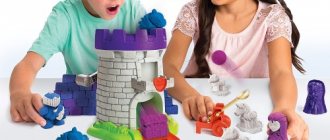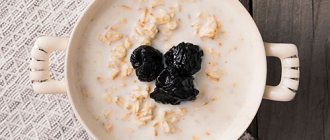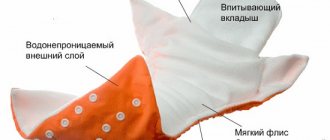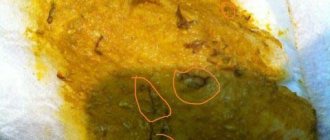A modern child is no longer interested in playing in a simple sandbox, which is not surprising given the appearance of kinetic sand (the word “kinetics”, translated from Greek, means “movement”). This is fine-grained sand, to which special synthetic components are added, thanks to which it acquires plasticity, does not stick to the skin, does not lose its shape and, most importantly, does not dry out. Today we will tell you how to make kinetic sand with your own hands and present various recipes for its preparation.
DIY kinetic sand
More details about smart sand
Several years ago, an innovative development was made in Sweden - the so-called kinetic sand. Externally, this material is no different from ordinary sand, but has much greater plasticity. It consists of quartz sand (this is almost 100% of the total mass) and the synthetic additive E900. Parents should not worry: the E900 supplement is non-toxic and not dangerous to the child’s health . This polymer (also known as silicone oil) is widely used in the food industry to reduce foaming. The additive is safe, it is allowed everywhere (the only exceptions are people who are allergic to this substance).
Blue kinetic sand
On a note! Nowadays, DIY kinetic sand is very popular, because it is not just an original and modern toy, but a means for developing a number of abilities in children.
Kinetic sand texture
Today, kinetic sand is very popular.
What is the secret of the popularity of “smart” sand? First of all, it combines 2 of the child’s favorite materials – plasticine and sand. It feels like sea sand, but it is so viscous that it easily takes any shape; Moreover, even due to minor impact, it crumbles beautifully, becoming an ordinary mass. An ideal material for sculpting, building cities, creating figures (using molds), it can be cut into pieces, but most importantly, it is extremely pleasant to the touch! Playing with “smart” sand is so fascinating that you can’t take your eyes off it!
The material is a combination of ordinary sand and plasticine
Origin and composition of kinetic sand
This universal toy was invented in Sweden by chemist specialists. She quickly won the sympathy of thousands of children and parents in all corners of this country. The first batch of Kinetik Sand (sand that lives and moves...) was produced in 2013 and sold very quickly in Swedish children's stores. Within a few months, tons of this sand were purchased by foreign consumers. Currently, “miracle sand” has reached our children's stores.
What does kinetic sand consist of? It contains environmentally friendly sea sand (silicon dioxide SiO2) in an amount of 98% and 2% linear polymer dimethylsiloxane (food additive E-900), which acts as a binder that envelops each grain of sand additive. When “live” sand is poured under the influence of gravity, its particles tend to separate, and the binder is drawn into polymer (almost invisible to the eye) threads 1-2 mm long, slowing down the movement of the sand grains. When compressed, the volume of this sand decreases by 2 times.
The benefits of kinetic sand
Let's consider how useful games with “smart” sand are for a baby.
Kinetic sand has a number of useful properties
- The material promotes the development of tactile sensitivity, as well as fine motor skills. Therefore, playing with it will benefit not only children, but also older people.
- Smart sand stimulates creativity and imagination.
- It also promotes the development of spatial thinking.
- Kinetic sand has a beneficial effect on the emotional state of the child, as it helps to concentrate attention.
- It relieves fatigue, stress, aggression. Agree, a real find!
- Finally, this is a fun game that brings the whole family together and provides unforgettable hours of closeness!
Playing with kinetic sand helps develop fine motor skills
What can be made from kinetic sand
Beautiful packaging with colorful drawings in itself arouses children's interest.
When unpacking the kinetic sand, the child is surprised at the “growth” of its volume. Kinetic sand – “two in one” (sand in a sandbox plus plasticine). It provides an excellent opportunity to entertain the baby and intensify the process of his individual development. Touching this mass, which is unusually pleasant to the touch, evokes positive emotions and sensory perception. The child plunges his hands into it, kneads it, passes it between his fingers, sculpts lumps, rolls balls and, pressing them with his fingers, admires their “melting”. After a long and comprehensive acquaintance with this extraordinary sand, you can now begin more interesting “things”. Kinetic sand is multifunctional, it can be used to:
Make Easter cakes of various shapes (you can use plastic cups of different sizes, egg cartons, special molds)- Squeeze out “cookies” in the form of fish, bunnies, birds, triangles, squares, diamonds, circles (for this, shortbread dough is rolled out and cookie cutters, etc. are used.
- Use a stencil to cut out any letters, numbers from 1 to 9, and kids will quickly remember them in this playful way
- Make pies, dumplings, cakes with various decorations with colorful stones and beads
- Form buns and sausages, then cut them with a plastic knife and make sandwiches
- Roll balls of various sizes, then arrange them in order of size from largest to smallest (this is a good place to talk about the solar system)
- Make snowmen by rolling three balls each - large, medium and small and invite the child to play the game “whose snowman will melt faster”
- The sand is suitable for sculpting animals, people, birds, etc.
- Build houses, roads with road signs, garages, launch equipment, little men
- Fence the zoo and place plastic animals there, tell the kids how to behave in the zoo
- Build mountains, volcanoes, deserts, towers, palaces
- Make imprints of various objects in the sand (purchase various molds)
- Draw footprints on the smooth surface of the sand and offer the child the game “guess whose footprint.” Make a bunny's footprints with a finger, a bird's with a twig, a baby's with his leg, an elephant's with his fist, etc.)
- Write letters and numbers on the sand with a stick, draw wavy lines, a river, trees, flowers and whatever your heart desires
- Draw a semicircle (rainbow) with four fingers and a sun with one finger. Talk about the colors of the rainbow and the thunderstorm. Tell older children how easy it is to remember all the colors of the rainbow (every hunter wants to know where the pheasant sits)
- Fence a plot for a vegetable garden, dig holes and plant toy vegetables, show how to care for them and, together with your child, remember the fairy tale “Turnip”
- Bury coins, multi-colored pebbles, small cars, various buttons in the sand and invite the child to find the treasure, and for older children to draw a map where the treasure is buried and offer the game “Find the Treasure”
- Print the buttons (with plastic connections from the construction set) and the baby will press each button with his finger
There are a great number of games with kinetic sand. Imagine, create, dare with your children!
DIY kinetic sand: pros and cons
The advantages of using the material are that it:
- available all year round (children cannot always play in a regular sandbox due to bad weather, for example, or illness);
- allows you to play at home, in a calm and safe environment (on the street, older children can push a small child inadvertently, because they prefer fast, active games);
You can play with this sand at home
- minimizes the risk of contracting various unpleasant diseases, which cannot be said about the sandbox where animals leave excrement;
- promotes the development of fine motor skills, spatial thinking, imagination and everything that was described in the previous paragraph of the article.
You can play with kinetic sand all year round
. As for the downsides, “smart” sand only has one – it is quite expensive. But in order to save the family budget, you can make kinetic sand with your own hands, since there is nothing complicated in the preparation process.
Articles on the topic
How to make slime at home
TOP 6 ideas on how to make squishies with your own hands
Video – “Smart” sand
On a note! There are many recipes for kinetic sand. Choose one of the master classes offered below and go ahead – create “living” building material!
This kind of sand can be made with your own hands.
Age restrictions for use
On the packaging, manufacturers indicate the lower age limit of “3+”, i.e. this toy is recommended for children aged three years and older. The fact is that sand contains small particles that a child can swallow or inhale, and this is quite dangerous. However, if parents play this game together with their children and thus monitor them, then it can be used from the age of one and a half years.
Option No1. DIY kinetic sand made from sand and starch
As mentioned above, this obedient mass consists of simple sand and special binding additives. The simplest, and therefore the most common, recipe for creating “smart” sand involves the use of potato starch.
Simple kinetic sand can be made from sand and starch
So, you need to prepare:
- 1 1⁄2 cups white sand;
- 1 cup starch;
- 2/3 glass of water;
- container for preparation (you can take, for example, a 500 ml ice cream bucket).
Simple recipe for kinetic sand
Table. Master class on making “smart” sand in 5 minutes.
| Steps, photo | Description of actions |
| Step 1 | Take a container and pour the prepared sand into it. By the way, pure sand is sold in a pet store - there it does not contain foreign impurities. |
| Step 2 | Add a glass of starch to the sand. |
| Step 3 | Mix the ingredients. You can do this with your hand or a tablespoon. |
| Step 4 | Pour in water, then stir everything again. This time you will have to mix only with your hands. |
| Step 5 | That's it, the kinetic sand is ready. You can start playing exciting games! |
On a note! Alternatively, you can use regular street sand, but it must first be calcined in a frying pan and sifted through cheesecloth.
Ready-made kinetic sand is easy to cut
The child will really like this surprise
The sand holds its shape perfectly when sculpted, and in the hands it spreads like water
Kinetic sand for children: at what age can it be used?
Parents are wondering whether it is harmful for children under 3 years old to play with a kineticist? Mothers who have already purchased play material for their children are reassured: it is not much different from sand in the yard - except that it is free of harmful microorganisms, dust and debris.
Manufacturers recommend using their product no earlier than three years of age. This is due to the fact that babies want to taste everything - but the same danger awaits the baby in an ordinary sandbox. And the child usually gets there as soon as he takes his first steps.
There is only one conclusion: a child’s play with a kineticist is possible under the supervision of parents after a year. Kinetic sand is a hypoallergenic and non-toxic product. Accidental ingestion of a small amount of it is not life-threatening: the polymer and quartz are not dissolved by gastric juice and are removed from the body naturally.
A great gift for a child is a radio-controlled helicopter. What is a children's scooter and how to choose it correctly?
What types of trampolines are there for children, and at what age can they be used? https://klubmama.ru/sovety-roditelyam/detskie-veshhi/kak-pravilno-vybrat-detskij-batut.html
Option No2. From baking soda and dishwashing liquid
To make your own kinetic sand, you can also use dish soap (or, alternatively, soap) and baking soda. There is nothing complicated here, just follow the instructions and in a few minutes the surprise for your children will be ready.
Baking soda can also be used to make kinetic sand
To prepare you will need:
- 2 parts soda;
- 1 part detergent;
- 1 part baking powder.
Step 1 . Mix all the bulk ingredients, and then, gradually adding detergent, thoroughly knead the mass with your hands.
Step 2 . Pass the resulting sand through your fingers so that no dry granules remain.
Step 3 . If the mass is not thick enough, you can add baking powder, but do it gradually, controlling the consistency.
Step 4 . What you end up with is smart sand that needs to be stored in a closed container (such as a food container).
After playing, it is better to place sand in a closed container.
From starch on water without sand
You can make your own kinetic sand from just starch and water without adding sand.
For this you will need:
- starch – 400 g;
- 200 ml water;
- any dye of your choice.
Preparation:
- Dissolve the paint in water and add starch little by little. To avoid lumps, mix everything well.
- Kinetic sand without adding sand is ready. Store the mixture in the refrigerator. If the mixture begins to harden, add a small amount of water.
Option No3. Made from silicate glue and boric alcohol
If you prefer this recipe, then first take care of the preparation:
- boric alcohol (4 teaspoons);
- sand for chinchillas (100 g);
- food coloring (1 teaspoon);
- silicate glue (2 teaspoons).
Excellent kinetic sand without starch can be obtained by adding silicate glue.
The ingredients are simple and can be found in every home. But the sand will turn out simply amazing! Don't believe me? Well, see for yourself.
Step 1 . Place boric alcohol in a small bowl, then add your chosen color dye and glue. Mix all ingredients thoroughly.
Stages of preparing kinetic sand from glue and boric alcohol
Step 2 . Add chinchilla sand to the resulting mixture. Why him? It is not only pure, but also has the required dispersion. Verified. Mix everything thoroughly and you can enjoy the unique properties of kinetic sand!
Mixing components and the final result
Made from flour and butter
Do-it-yourself kinetic sand according to this recipe is ideal for modeling for small children. It's easy to knead without being too sticky.
What you need for cooking:
- 100 g flour;
- 100 ml water;
- 15 ml sunflower oil;
- 50 g salt;
- citric acid – 5 g.
Preparation:
- All components are mixed and poured into a ladle. The mixture is placed on low heat and stirred constantly. The heating time is approximately one minute - during this time the sand should harden.
- The resulting lump is thoroughly kneaded, divided into parts and a dye of the selected color is added. When you add fruit essential oils to the mixture, the mixture will acquire a pleasant smell.
Option No4. Made from wheat flour and quartz sand
By adding flour, wonderful “smart” sand can be made without starch. Your child will really like the material obtained in this way, because it holds its shape well and is easy to work with.
You can make wonderful “smart” sand from flour
To prepare you will need:
- 3 parts flour;
- 6 parts quartz sand;
- 1.5 parts clean water.
Wheat flour
Step 1 . First, sift the flour and mix it with sand. Also take a second container and mix water and food coloring in it.
Step 2 . Add the coloring composition to the mixture of sand and flour, doing this in small portions. Mash well so that there are no lumps (you can do this with a fork).
Step 3 . It is recommended to divide the finished sand into several portions and then paint it in the required shades.
For coloring, you can put the resulting sand in different bowls and add a specific color to each of them.
How to make kinetic sand at home
An ordinary sandbox is no longer interesting for children, but children really love sand with the properties of plasticine. It can be found on sale in packages of any size and in a variety of colors, including additives of sparkles, metallic glitters and glow-in-the-dark particles. Unfortunately, it will not be possible to preserve it in its original condition; the shades mix, acquiring an overall dirty color, and the mass gets dirty over time.
Not every family budget is designed to constantly purchase a kinetic mixture for the price they ask for it at the checkout. Fortunately, the same properties can be achieved by mixing components available in any home. The most preferred ones are pure sand, many liquids from water to oil, starch or flour.
Recipes
Constantly buying a new batch of kinetic sand is expensive or inconvenient, but there is a way out: there is no easier way to mix the plastic mass yourself; there are many recipes. Fortunately, the material prepared at home may not be any worse than that brought from the store.
From baking soda and detergent
The mixture is prepared very quickly, the cost is cheap. The surprise for kids can be mixed in half a minute.
Required in parts:
- 2 tsp baking soda;
- 1 tsp baking powder;
- 1 tsp dish liquid.
The bulk components are mixed with each other, gradually pouring in the dish gel, and kneading the sand mass. If it is not thick enough, add more baking powder until it reaches the optimal consistency.
Sand-plasticine obtained according to the given recipe dries open; for storage it is advisable to put it in a container with a tight lid.
From starch and shaving foam
Prepare an excellent composition, even if complex ingredients are not at hand. In any home there is always a pack of starch and a bottle of shaving cream, which means entertainment for children is a matter of minutes.
Required:
- 450 g of any starch;
- 140 g shaving foam.
The foam is squeezed into powder until balls appear, then everything is mixed and carefully rubbed until a loose mixture suitable for modeling is formed.
From sand and starch
Required in parts:
- 4 hours of ordinary sand;
- 2 tsp starch;
- 1 tsp water.
Ingredients for preparing kinetic sand
First of all, stir starch into the liquid in a basin, then gradually add sand, mixing carefully. If the mass seems runny, you can add a little starch.
Sand purified from harmful impurities and microorganisms is offered in pet stores; it is an indispensable component for bathing chinchillas.
Made from quartz sand and wheat flour
Starch is an excellent substitute for flour; this composition will be more sticky and will retain its shape better.
Required:
- 2 tbsp. flour;
- 4 tbsp. pure quartz sand;
- 1 tbsp. water.
Preparation: sifted flour is mixed with sand. The liquid is gradually added to the dry mixture, kneading the lumps.
From starch and hair balm
Hair balm easily turns into a key component that makes the modeling mass plastic. Once you mix it with starch, there will be creative space in the nursery.
Necessary:
- 750 g potato starch;
- 9 tbsp. l. hair balm.
The starch and balm are not mixed immediately: the liquid is added little by little and the mass is rubbed with your hands. Good consistency - not sticky to the skin. If desired, you can add any food coloring.
Preparation of kinetic sand from starch, balm and dye
From glue and boric acid
An unexpected combination of components with a base of ordinary quartz sand will provide children with material to play for a long time.
Required:
- boric acid – 40 ml (1 bottle from the pharmacy);
- thick silicate glue – 20 g;
- quartz sand – 300 gr.
In a separate container, thoroughly mix the acid and glue with a wooden spatula. Then sand is gradually added; gloves are used at the beginning of kneading. Large particles and random debris are removed from the composition; at the end of mixing, a mass is obtained that is perfectly molded and stored.
From sand, flour and butter
The recipe with quartz sand and flour can be improved by adding a couple of tablespoons of any liquid oil.
Both mineral and purified vegetable are suitable. Add a couple of tablespoons of oil and water to 4 cups of sand and 2 cups of flour until the required consistency appears.
Made from starch, glitter and baby soap
Kinetic sand can be made bright and shiny, you will need glitter. Even unnecessary cosmetics will do; any shadows and glitters are safe enough to use and look beautiful in the finished mass. To prevent decorative particles from flying off, you will need to secure them with soap.
Necessary:
- starch – 2 tbsp;
- water – 1 tbsp.;
- glitter as much as you like;
- finely grated baby soap - 2 liters.
After mixing the dry ingredients, water is added gradually to the required consistency. Depending on the moisture content of the starch, more or less water may be needed.
From baking soda, baking powder and soap
Required in parts:
- soda – 2 hours;
- baking powder – 1 tsp;
- liquid soap – 1 tsp.
Ingredients for making kinetic sand
Preparation: First of all, prepare the dry ingredients by mixing baking powder and soda. Soap is gradually added, which can be replaced with shower gel or dishwashing liquid. The result is a soft mass that does not hold its shape quite clearly.
Edible sand from food ingredients
Little curious researchers often strive to try everything they can get their hands on. For babies, sand is prepared from edible ingredients. It won’t be tasty, but it won’t harm your health either, even if the baby decides to swallow a little.
Several mixing options available:
- 8 cups of flour are mixed with 1 cup of butter, this mixture retains its properties for a long time.
- You can prepare a mixture of sugar and butter.
- You can prepare another mixture for the game from starch and water (250 g/100 ml).
Tip: If you add more water to a starch-water mixture, you can get a non-Newtonian fluid, solid and liquid at the same time.
Tips for making kinetic sand at home
- When creativity begins to captivate, children often ask for multi-colored sand. The solution is simple: the water components can be tinted with gouache or food coloring and then used to make the mixture. Another option is to crumble colored chalk.
- You don’t have to buy quartz sand at a pet store; you can collect it yourself. The main thing is to collect it in nature, on the beach or seashore; a dirty sandbox in the yard is not suitable due to walking pets. Before the sand turns into a magical bright mixture, it requires calcination or pouring boiling water, drying and sifting. This will guarantee uniform, obedient mass and safety for children.
- Homemade composition is usually prepared without oils; water components begin to dry out over time. You can keep the mixture in working condition by covering it with games, refreshing it with water through a spray bottle, or mixing a little moisture into the composition.
Homemade sand is prepared in a matter of minutes; its composition couldn’t be simpler. But inventive children find many ways to play with it. It can be used to create sculptures, it is fun to learn numbers and letters, and even prepare a doll tea party with sausages and cupcakes. The kids are ready to pour it into buckets endlessly. The games don’t get boring, the main thing is to prepare a bigger sandbox!
Option No5. From shaving foam and starch
You will be surprised, but “smart” sand can be made without soda, using very affordable materials. With our recipe, preparation will take you just minutes.
You can make this kind of sand from shaving foam in a few minutes.
First prepare the following:
- 140 g shaving foam;
- 450 g starch (potato or corn).
Step 1 . After preparing everything you need, start adding foam to the starch until balls begin to appear.
Step 2 . Beat everything well (rubber gloves will come in handy here), then add gouache or dye (if you want).
Step 3 . Thoroughly grind the resulting mass so that you end up with a mixture reminiscent of sea sand.
Stages of preparing kinetic sand from starch and shaving foam
Gaming accessories
Today, there is a large selection of play accessories available for practicing with kinetic sand. For example, sets with original tools and molds, special tables, inflatable sandboxes. All this will help maintain cleanliness in the playing area, and will also make the game safe at home.
Kinetic sand is sold in cardboard packages. Material weight - 1 or 5 kg. Larger packages are available for group classes.
Option No6. From hair balm and starch
A plastic mass can also be prepared using hair balm. As a result, you will get excellent material for children's creativity!
Hair balm is also suitable for creating kinetic sand
To work you will need:
- 9 tbsp. spoons of hair balm;
- 750 g potato starch.
Step 1 . You will also need food coloring, so have it ready. As an option, you can take gouache.
Step 2 . Pour the balm into a container, then add the dye and mix them thoroughly until the mass becomes homogeneous.
Step 3 . Add starch little by little, stirring constantly to obtain a mass without lumps. If the mixture is made correctly, it will not stick to your hands or stain them.
Sliced kinetic sand fish
How to Make Edible Kinetic Sand from Food Ingredients Without Sand
If you want to make kinetic sand that is technically edible, then this recipe is for you. It does not contain chemical components, so it is ideal for babies who put everything in their mouth!
Necessary:
- 1 cup wheat and corn flour in equal proportions
- 1 cup vegetable oil (any type)
- 1 tbsp. l. corn syrup
Instructions:
- Mix bulk ingredients
- Add syrup and butter
- Please note: introduce the last component in small portions. And if you have very thick sand, then you should add vegetable oil little by little and knead well.
Suitable even for babies
Option No7. From starch and dishwashing gel
And the last sand recipe, which also involves the use of available materials. It will take no more than 15 minutes to prepare!
So, you will need:
- dishwashing gel (1 teaspoon);
- clean fine sand (2 cups);
- starch (preferably corn starch, but potato starch is also suitable - 1 cup);
- warm, but not hot water (0.5 cups);
- essential oil (optional, just needed for scent).
Step 1 . Take a container of a suitable size, mix all the ingredients to obtain a homogeneous mass.
The components must be mixed until a homogeneous mass is obtained.
Step 2 . In principle, the “smart” sand is ready. A great surprise for your child!
The finished sand holds its shape perfectly
The sand is not wet, but as if wet
Kinetic sand figurine
The material is easy to cut
On a note! First, it’s better to make a small portion, and only then, after filling your hand, you can make more sand using different dyes. Try the recipes above to not only please your baby, but also save money!
Homemade kinetic sand
The main disadvantage of the described sand masses is further cleaning. Get ready for this! You can lay a disposable tablecloth or oilcloth for your child in a place where it will be convenient to clean. When your baby is done playing, store the sand in an airtight container to extend its lifespan.
We also note that homemade “smart” sand, despite its similarity to factory sand, still dries out after some time and therefore becomes unsuitable for play. What should I do? Just add a small amount of water or spray from a spray bottle.
Kinetic sand: instructions for use
To prevent sand from losing its qualities, drying out and becoming dirty, a number of simple rules should be followed when using and storing it.
- Optimal conditions for use are room temperature and air humidity not higher than 60%. If the kinetics gets accidentally wet, it is dried without special heating.
- In rooms with low humidity, kinetic sand loses its elasticity (it cannot dry out, since it does not contain water). To restore the mobility of the material, it is lightly sprinkled with water and crushed in your hands - after which it will again become loose and fluid.
- Kinetic easily absorbs odors, so you should wash your hands before playing.
- Sand is not afraid of ultraviolet radiation, and it should be protected from dust, moisture, and pets using a regular lid. You can store the material in a container or inflatable sandbox.
Creative ideas from caring parents will tell you how to use sand creatively. This can be not only modeling and molding, but also developmental training:
- cutting out geometric shapes using figures from a sorter and memorizing them;
- comparison of three-dimensional figures with their flat images;
- learning to use a knife - the kineticist cuts just fine (play under control, the knife should not be sharp);
- writing letters and drawing with a sharp stick in the sand;
- stamps – children like to make prints; any convex objects are suitable for this;
- sculpting letters and numbers - if you make them yourself, they are easier to remember.
Precautions for use
As already mentioned, sand is non-toxic. However, you should avoid getting it in your mouth, ears, nose and eyes.
For this purpose, games of young children should take place under the supervision of adults. Scattered sand is collected in a timely manner by hand or with a vacuum cleaner, otherwise its volume will gradually decrease.
Mothers are advised to put the kinetic in a plastic bag every day so that the baby does not start playing on his own and does not spill sand all over the house.
Kinetic sand games
You can get your child interested in playing with hand-made “smart” sand by offering the following activities:
- excavation games (you can hide/dig up small toys);
- making Easter cakes using a bucket and plastic molds;
- forming bars and sausages with their subsequent cutting into pieces;
- cutting out flat figures (you can use cookie cutters);
- sculpting fairy-tale heroes, snowmen;
- creating multi-tiered cakes, dividing them into portions;
- construction games (with figures of people, cars);
- stamping (creating prints with stamps).
Ways to play with homemade sand
Arrangements of the playing area
For games, it is better to take a special container from which sand will not be scattered on the floor (at least partially). For such a sandbox, you can, for example, use a plastic or wooden box. Take it, cover it with cling film and feel free to pour sand into it.
It is best to use a special container for playing with sand.
When your baby finishes playing, be sure to wash his hands with soap or, alternatively, use a damp cloth.
How to store kinetic sand?
It should be stored at room temperature; a regular (plastic or glass) container with a sealed lid is suitable for storage (so that the mass does not dry out and dust does not get into it).
To store kinetic sand, it is better to use a plastic container with a lid.
Advantages of the material
Manufacturers point out that kinetic sand has a number of advantages over natural substances. The advantages include the following:
- This product is very plastic and safe for children. It has a pleasant texture and provides scope for the development of the child’s creative imagination.
- It is very easy to make figures from it, since, unlike ordinary sand, it retains its shape well.
- Does not require special storage conditions. The shelf life indicated on the packaging - 3 years - can easily be extended.
- In this case, the mass does not dry out.
- The polymer environment prevents the emergence and spread of pathogenic bacteria. This information can be very important for parents who are concerned about the health of their children. After all, in ordinary sandboxes, which are located on children's playgrounds, you can often see cats and dogs walking.
- It is easy to wash, and moisture ingress does not affect its performance.
- Kinetic sand is sand for children that does not crumble. It has a viscous structure. It may appear to have magnetic properties. And the smooth fluidity gives the impression that it is alive.
- Cleaning it is not particularly difficult. It can be easily removed from the table with just a damp cloth, and if particles of sand get on the carpet, they can be removed with a vacuum cleaner.
Among the minor inconveniences that you may encounter when using the material is the odor that silicone polymers have. It smells a little like glue, but dissipates quickly enough and doesn't cause much trouble.










